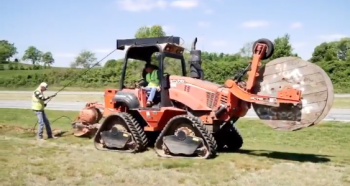I recently had the opportunity to share some thoughts regarding how critical and timely broadband deployment is with The Hill, a premier publication that closely follows Congress and the Administration. It was gratifying to be able to share how community-based broadband providers are leading the way and why the time to act on a significant infrastructure package is now. Here is what I shared with The Hill and their readers.
Now is the time to aim high and look local on broadband
More rural consumers across the United States have access to high-speed internet over the past decade thanks to the yeoman’s work of local broadband providers to connect their neighbors and communities nearby. Fueled by a strong entrepreneurial spirit, commitment to community and creative partnerships, they have leveraged funding from the FCC, Congress, and states for broadband deployment. We are on the cusp, however, of an even greater opportunity to close the remaining digital divide with a once-in-a-generation investment in broadband infrastructure through the Infrastructure Investment and Jobs Act, which, if passed by the House and signed into law, would devote tens of billions more toward the deployment and affordability of broadband, with the goal of connecting every American.
But how do we spend these funds wisely? Policymakers must aim for the best return. We should invest rather than speculate with these funds, deploying networks that are built to last and can keep pace with growing demands. We will not achieve national broadband goals — including enabling higher performance online services supporting artificial intelligence, autonomous vehicles, precision agriculture, and better access to health care and education — without a strong foundation of fiber connectivity. Fiber has been proven to provide the best levels of performance, and even those focused on a wireless 5G future acknowledge that more substantial fiber deployment will be critical to achieve promise of that service.
We shouldn’t gamble with broadband funds. Consumers deserve first-rate service. We should look to proven concepts that have demonstrated in the marketplace that they will deliver speeds and other metrics of performance as promised. We also need to keep our eye on future consumer demand. Building networks that need to be rebuilt substantially to scale is inefficient and a recipe for long-term failure. This is especially important in rural areas, where it’s so hard to build in the first place and all kinds of obstacles ranging from mountainous terrain to national forests can complicate planning for sufficient and reliable coverage. Let’s do it right the first time and deploy sustainable, future-proof fiber infrastructure.
Policymakers should also look local when deciding who is best positioned to deploy and maintain these networks. While many rural Americans remain without broadband, millions have access to high-speed internet thanks to community-based providers. As CEO of NTCA–The Rural Broadband Association, which represents nearly 850 broadband providers based in rural areas across the country, I am proud to say that 70 percent of our members’ customers are served by fiber-to-the-home broadband that can provide downstream speeds greater than 100 Mbps and just under half (45 percent) have access to at least 1 Gbps service — and more customers are getting connected to fiber every day. For example, NTCA member ATMC in North Carolina just announced a new construction project that will connect every single one of their cooperative members to fiber. Unfortunately, many other rural residents are not so lucky to be served by small local providers with a vested interest in the success of their communities. With their experience in rural broadband and their proximity to many of the areas that remain unserved, community-based providers are a logical resource upon which to rely in overcoming our remaining digital divide.
We must also look to increase broadband speeds. The pandemic has highlighted that the current federal standard of 25 Mbps/3Mbps is simply not enough for the average family working and learning at home. And if 25 Mbps isn’t enough now, it certainly won’t be in 10 years. When building new networks in rural areas, we should invest in a minimum of 100/100 Mbps connectivity. And once all of the areas lacking 25/3 Mbps broadband are served at this higher level, we can then come back and address areas lacking access to higher speeds as well.
Funding is of course essential, but there are other issues that we can’t overlook in a smart national broadband strategy. Broadband providers are now finding it harder to locate network supplies on a timely basis; policymakers must consider how to mitigate these supply chain shortages. We must also keep an eye on permitting. It is important to require better coordination and streamlined applications across federal agencies for broadband projects, and there should be a process for expediting use of existing rights-of-way when placing new facilities in previously disturbed terrain.
Finally, what’s often overlooked in the rush to build broadband is that it’s important not only to get broadband there, but also to keep it there and keep it affordable. Networks must be upgraded and maintained, and customers need to be able to buy the services offered. Policymakers must therefore ensure that the Universal Service Fund — which for decades has fulfilled these essential functions and remains mission-critical both to the business case for and the sustainability of rural broadband in so many rural areas — is itself sustainable and delivers sufficient and predictable support where needed.
We are on the cusp of a new digital age, one where all Americans must have access to robust and affordable broadband connectivity. But we must invest wisely, ensuring that we are making investments that will stand the test of time and give consumers and businesses what they need today and for decades to come. As they look to spend and invest new funding for broadband, I urge policymakers to aim high and look local to give all Americans the best internet access.


